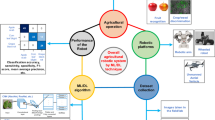Abstract
Coconut (Cocos nucifera) is one of the major plantation crops in Sri Lanka. It has paved the way for establishing many industries due to versatility of the crop earning significant income to the country. One of the most important export products of coconut is “Copra” which earns a high export market income to the country (927.7 Rs/Mln in 2019). Literature reports that the copra conversion factor (CCF) is 0.19 kg, where approximately 5 nuts are required to produce 1 kg of copra. This study investigates the stability of this conversion factor and the dependency of it with various nut parameters (number of nuts in a harvest, fresh nut weight, husked nut weight (DW) and split nut weight (SW)) and meteorological parameters (rainfall, maximum and minimum air temperatures) to establish a relationship to estimate CCF of a nut. Results showed that CCF was temporally not stable and positively correlated with DW and SW. The study established a model to predict CCF using multilayer feed-forward neural network approach (MLFFNN). Performance of the model showed R = 0.83 in training, 0.93 in testing and 0.93 in validation with MSE < 0.0002. Study further revealed that ~ 50% of the temporal variability of copra outturn was explained by temperature related parameters.


Source: Coconut Research Institute, Sri Lanka


Similar content being viewed by others
References
Department of Census and Statistics (2017) Economic Census 2013/14 - Agricultural Activities. Department of Census and Statistics, Sri Lanka
Coconut Development Authority (2019) Coconuts: Pattern of Utilization - 2018/2019. In: Prod. Details. https://www.cda.gov.lk/web/index.php?option=com_content&view=article&id=88&Itemid=244&lang=en
Peiris TSG, Thattil RO, Mahindapala R (1995) An analysis of the effect of climate and weather on coconut (Cocos nucifera). J Exp Agric 31:451–460
Peiris TSG (1993) The degree of influence of rainfall on coconut. In: Advances in coconut research and development. pp 413–420
Waidyarathne KP, Dissanayake HDMAC, Perera SACN, Chandrathilake TH (2019) Impact of extreme weather events on coconut production in IL1b Agro-ecological region of Sri Lanka. In: Rodrigo VHL, Wijesuriya BW, Edirisinghe DG, Nayanakantha NMC (eds) Proceedings of the seventh symposium on plantation crop research- “Towards Achieving sustainable development goals in the plantation sector.” Rubber Research Institute of Sri Lanka, Dartonfield, Agalawatta, 12200, Sri Lanka, pp 1–11
Samarasinghe CRK, Meegahakumbura MK, Dissanayaka H et al (2018) Variation in yield and yield components of different coconut cultivars in response to within year rainfall and temperature variation. Sci Hortic (Amsterdam) 238:51–57
Ranasinghe CS, Silva LRS, Premasiri RDN (2015) Major determinants of fruit set and yield fluctuation in coconut (Cocos nucifera L.). 43:253–264
Abeywardena V (1979) Influence of watering on the yield of coconut. Ceylon Coconut Q 30:91–100
Benita S (2010) Economics of coconut products A study in Coimbatore district. Madurai Kamraj University
Banzon JA, Gonzales OM, de Leon SY, Sanches PC (1990) Coconut as Food. Philippines. Philipp Coconut Res Dev Found
The World Bank (1986) Agro-Industry Proffles: Coconut
Coconut Development Authority (2017) Coconut Statistics. Coconut Development Authority, Sri Lanka
Krishna Kumar KN (2011) Coconut phenology and yield response to climate variability and change. Cochin University of Science and Technology
Minitab I (2014) MINITAB release 17: statistical software for windows. Minitab Inc, USA, p 371
The MathWorks I (2018) Neural Network Toolbox. MATLAB R2018a
Milne L (1995) Feature selection using neural networks with contribution measures. In: Proceedings of eighth Australian joint conference on artificial intelligence AI’95. Citeseer, p 571
Fernando JKT, Abeywardena V (1963) Seasonal variation of coconut crops. Ceylon Coconut Q 14:74–85
Geethanjali S, Rajkumar D, Shoba N (2014) Correlation and path coefficient analysis in coconut (Cocos nucifera L.). Electron J Plant Breed 5:702:707
Perera PIP, Hocher V, Weerakoon LK et al (2010) Early inflorescence and floral development in Cocos nucifera L. (Arecaceae: Arecoideae). South African J Bot 76:482–492
Marar MMK, Pandalai KM (1957) Influence of weather factors on the coconut crop. Indian J Met Geophys 8:60–70
Abeywardena V (1956) Rainfall and crops Ceylon Coconut Q 6:17–21
Nambiar MC, Sreedharan A, Sankar N (1969) Prelinimary observations on growth pattern of, and the likely effect of seasons on, nut development in coconut. Indian J Agr Sci 39:455–461
Henry Louis I, Annappan RS (1980) Environmental effects on yield of coconut palms [India]. Indian Coconut J
Nambiar N, Rao G (1991) Varietal and seasonal variation in oil content of coconut. Coconut Breed Manag 283–286
El-Shafie A, Mukhlisin M, Najah AA, Taha MR (2011) Performance of artificial neural network and regression techniques for rainfall-runoff prediction. Int J Phys Sci 6:1997–2003
Monjezi M, Ghafurikalajahi M, Bahrami A (2011) Prediction of blast-induced ground vibration using artificial neural networks. Tunn Undergr Sp Technol 26:46–50
Arulsudar N, Subramanian N, Murthy RSR (2005) Comparison of artificial neural network and multiple linear regression in the optimization of formulation parameters of leuprolide acetate loaded liposomes. J Pharm Pharm Sci 8:243–258
Acknowledgements
Authors are grateful to the staff of the former biometry division at Coconut Research Institute (CRI) of Sri Lanka for assisting in the implementation of field study and the data collection. Coconut Processing Research Division of the same institute is also greatly acknowledged for preparing copra during the study period.
Funding
Not applicable.
Author information
Authors and Affiliations
Corresponding author
Ethics declarations
Conflicts of interest
The authors declare that they have no competing interests.
Additional information
Publisher's Note
Springer Nature remains neutral with regard to jurisdictional claims in published maps and institutional affiliations.
Rights and permissions
About this article
Cite this article
Waidyarathne, K.P., Chandrathilake, T.H. & Wickramarachchi, W.S. Application of artificial neural network to predict copra conversion factor. Neural Comput & Applic 34, 7909–7918 (2022). https://doi.org/10.1007/s00521-022-06893-3
Received:
Accepted:
Published:
Issue Date:
DOI: https://doi.org/10.1007/s00521-022-06893-3




